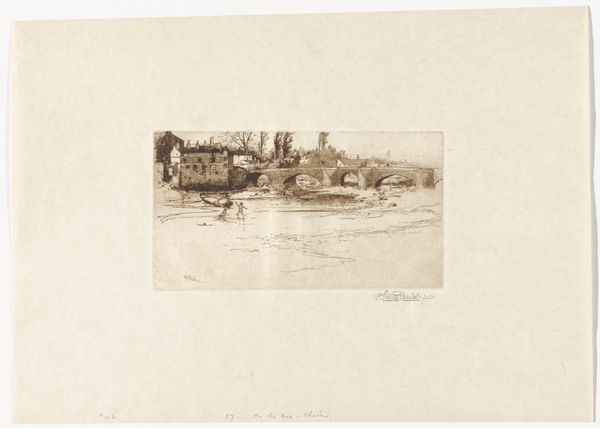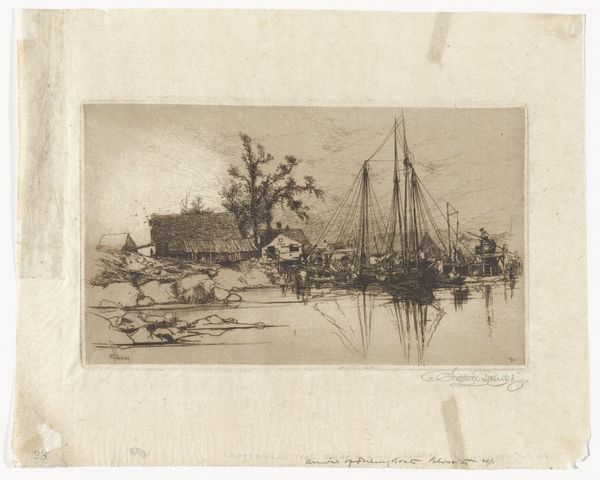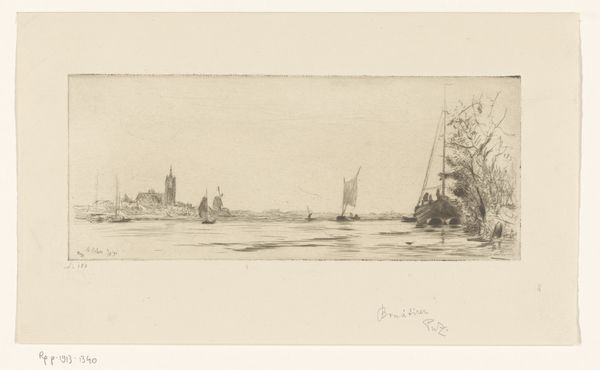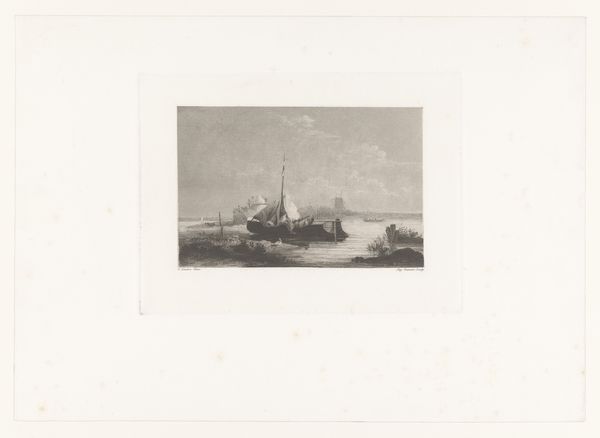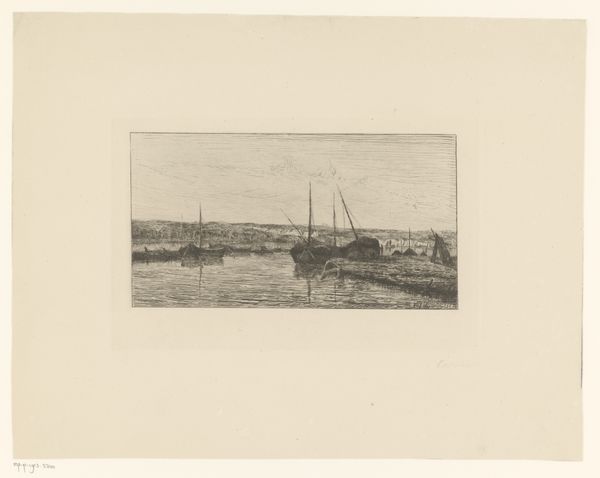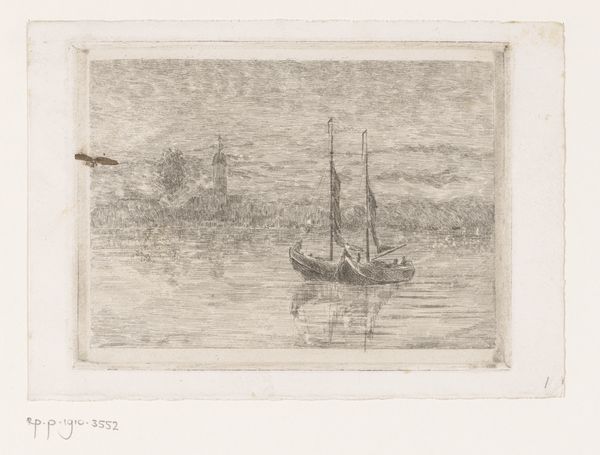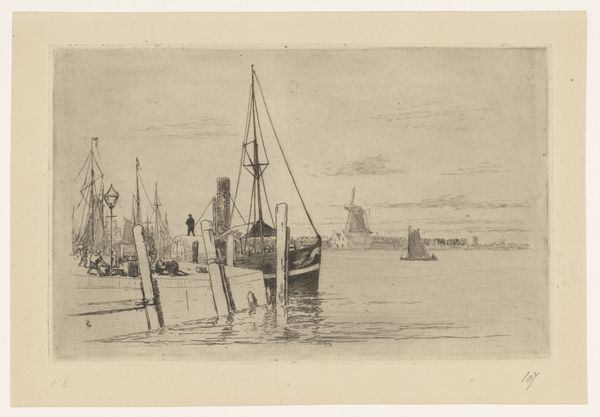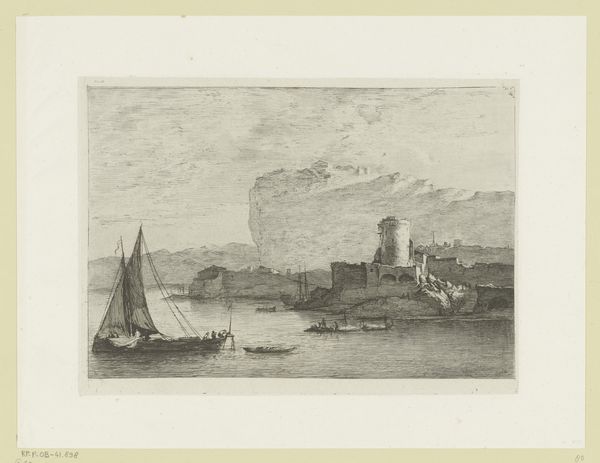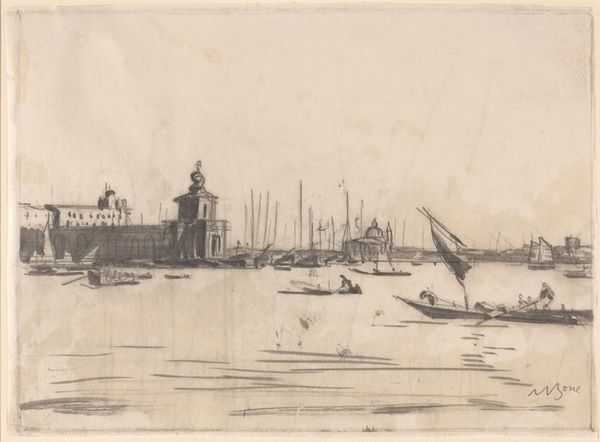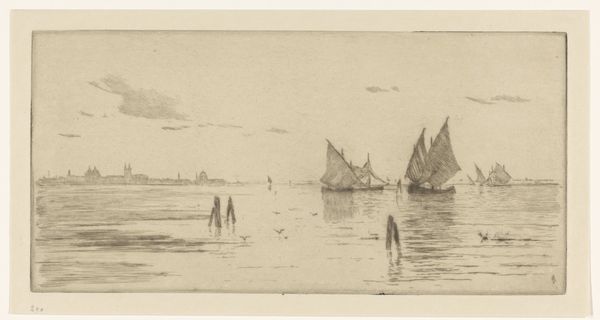
Dimensions: 6 7/16 x 11 13/16 in. (16.35 x 30 cm) (plate)14 x 18 in. (35.56 x 45.72 cm) (mat, Size I)
Copyright: Public Domain
Curator: Stephen Parrish created this subtle yet evocative etching, "Annisquam," sometime in the late 19th century. It's a fantastic example of American Impressionism currently held here at the Minneapolis Institute of Art. Editor: The first thing that strikes me is the overwhelming tranquility. It's monochromatic, dominated by muted browns and tans which create a sense of stillness. Curator: The monochromatic palette, the brown ink against the cream of the paper, invites questions regarding its relationship with a nostalgic view of the rural or pastoral and, indeed, which social groups are reflected or not within the landscape tradition. Are we invited to ponder how access to nature, particularly through aesthetic representation, can itself become a marker of privilege? Editor: An interesting take. I find the texture achieved through the etching process more immediately captivating. Look closely, and you can trace the myriad of delicate lines. The composition leads your eye smoothly from the architecture on the shore, along the waterline, and then, outwards towards the sailing boats. There is real attention given to surface and light. Curator: Precisely! This invites discussion around labor, class, and the changing American landscape during the Impressionist movement. The figures within Parrish's scene, rendered with subtle detail, serve to invite interpretations beyond a purely aesthetic encounter, acting instead as a signifier of collective lived experiences and questions of class identity. The seemingly straightforward visual presentation might encourage audiences to unpack narratives around social equity. Editor: Perhaps, but isn’t it the careful modulation of light that truly animates the buildings along the coast and evokes the vastness of the sky and sea? The boats create movement on an otherwise still scene and allow your gaze to roam across the surface of the work. Curator: The piece, then, is an exercise in portraying, indeed commodifying, a version of American leisure. We are positioned as viewers to consider, through a critical lens, the social context that facilitates and shapes that experience. How does Parrish depict and implicitly validate leisure activities during an era of evolving socio-economic disparity, and does his technique promote or question access? Editor: Well, I’ll certainly mull that over as I admire Parrish’s compositional strategy! It is something to note on this landscape! Curator: Indeed. I leave with an enriched view on the work and how aesthetic engagements intersect broader narratives.
Comments
No comments
Be the first to comment and join the conversation on the ultimate creative platform.

